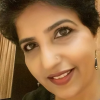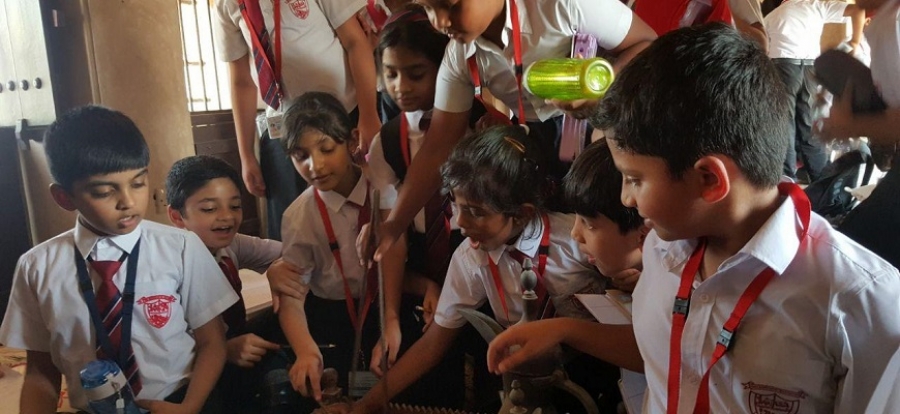This unique museum holds workshops for children, where they create artefacts, learn calligraphy, and create patterns using stencils. It houses the works created by students, thereby encouraging children to appreciate the need to preserve and showcase various artefacts in museums.
Each step in the school museum project is planned in advance of instruction, so that teachers understand, refer to, and incorporate the key questions for each step of the process as they plan the project and as instruction unfolds. They understand and encourage the traits of high-quality teamwork, research, exhibit design, and label copy. On top of this, they also teach students about these traits, and frequently refer to them throughout instruction. The Social Studies curricular objectives have been mapped in a way that students can use these wonderful museums as their classrooms.

We have been able to expose children to new experiences in a rich and educational environment, where they have the opportunity for hands-on play, engaging with interactive exhibits and taking ownership of their own learning as they explore their own curiosities. Museums offer a dynamic opportunity and a unique exposure to the foundations of creativity, and critical thinking, all connected to the real world. By turning the museum into a classroom, children get a chance to connect, understand, and explore perceptions, feelings, and innovative thoughts.
Another museum that our students visited was the Majlis Ghorfat Umm Al Sheif which provided children with a unique opportunity to learn about the historical furniture, tools and utensils in traditional Emirati Majlis. Established in 1955, to be the summer resort of late Sheikh Rashid bin Saeed Al Maktoum in the Jumeirah area, it contains samples of copper buckets, coffee stoves, jars, earthenware, brassware, rugs and carpets, in addition to the relatively modern appliances of those times such as clocks and radios, along with rifles and daggers which were carried in their belts by the men.
Our students toured the upper and lower floors of the Majlis, drew pictures of the artefacts, interviewed the curator and learned more than they ever would by turning the pages of a textbook.

Here is what a few students had to say:
“I wish my parents knew such a place existed. I never had an opportunity to visit such an interesting museum with my parents.” - Naima Nishad of Grade 3B
“If there was no electricity at that time, why are you modernising it by installing electric bulbs in the historic monument?” - Aditya Anish of Grade 3J
The Sharjah Science Museum fascinated our very young ones. Hafsa of Grade 1A remarked that the “Sharjah Science Museum was an exciting place. We had fun and learnt many new things. The bubble show was a fun experience. I felt soapy when I entered the bubble. I have never seen bubbles of different shapes!”
Sianne of Grade 1B was awestruck: “I saw a mirror which shook hands with me. I wonder… how? I think someone was behind the mirror, or was it just magic?”
And with the advent of technology, the school is exploring virtual tours of museums that will further enhance the quality of their learning. We are working with the directors of the museums to record student impressions so that visitors can listen to their thoughts on the audio tour of the museum.
We are looking forward to embedding this approach while transacting the Social Studies curriculum. It encourages reflection, experimentation, inspiration, creativity, enjoyment and allows for authentic learning experiences and play.
Want to receive cutting-edge insights from leading educators each week? Sign up to our Community Update and be part of the action!


















